The power of correlating observability signals
Observability is a complex landscape to navigate for organizations. Many different signals can be collected, such as metrics and logs, and traces are becoming increasingly relevant to track applications. Over the past few years, correlating observability signals has become one of the most helpful ways to deal with the increasing volume of observability data, minimizing the time and effort required to troubleshoot clusters effectively.
In this case, correlating observability signals means following relationships to find related data in multiple heterogeneous stores. Despite the power of such correlation tools, no open source project focusing on Kubernetes clusters had yet been made available. That is why Korrel8r was created. Red Hat founded the project in 2022 and it was first introduced in KubeCon Europe 2023. It is currently an alpha project of the Red Hat Observability organization.
Benefits of Korrel8r
Korrel8r is a correlation engine for observability signals and observable resources. It can correlate multiple domains, diverse signals, inconsistent labeling and varied data stores.
What are the project goals?
Korrel8r can encode domain knowledge from site reliability engineers (SREs) and other experts as re-usable rules. These rules can automate navigation across observability signals and help users' focus on the data they need to diagnose cluster problems and their root causes.
Korrel8r rules describe relationships between signals. Given a start signal (or object), such as an alert in a cluster, and a goal, like finding related logs to a specific alert, the engine searches for goal data (in this case, logs) that is related to the start signal (in this case, a given alert) by some chain of rules.
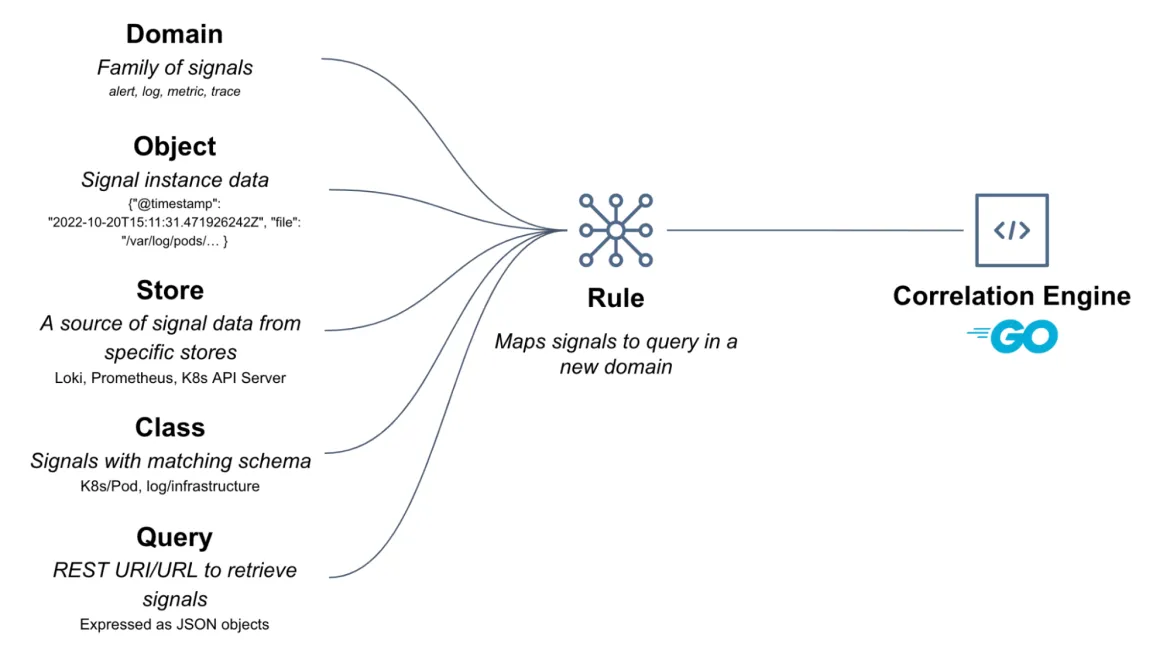
Korrel8r aims to connect data from different types of data stores—even those characterized by different schemas—to reduce manual steps and minimize cluster troubleshooting efforts. Currently, Korrel8r connects to data stores such as Loki for logs, Prometheus/Thanos for metrics and the kube-API server for cluster resources. View the following architecture diagram or read the Korrel8r documentation for more information.
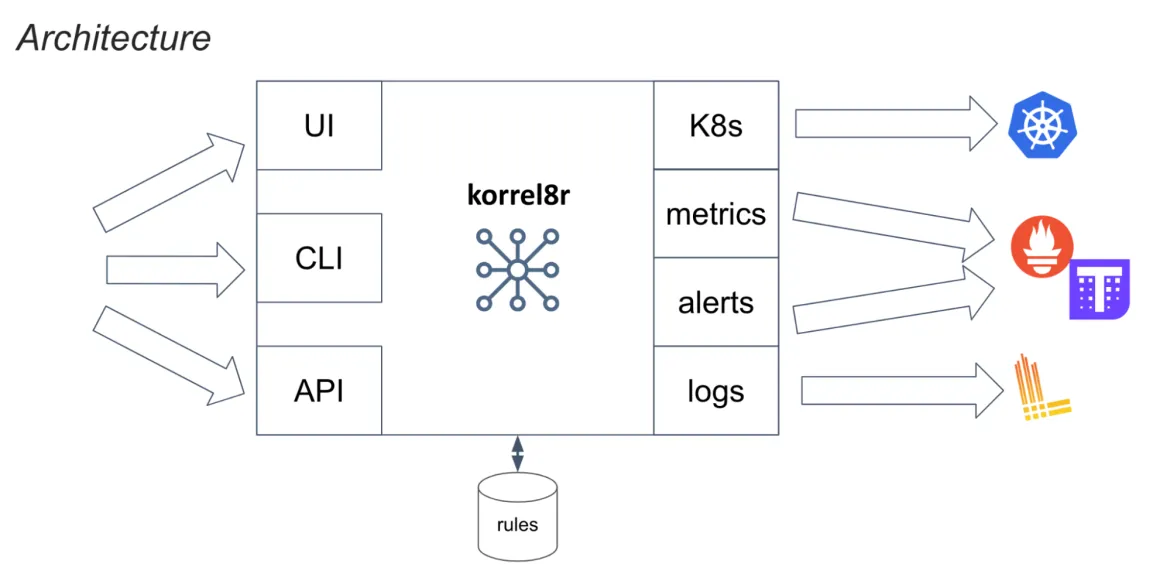
By providing a REST API, Korrel8r aims to be useful in various contexts. In the first application, a cluster console displaying resource or signal information will query Korrel8r to discover related resources and signals that can be displayed to the user. Korrel8r is not tied to the Red Hat OpenShift web console; it is a generic service that accepts queries identifying starting objects (resources or signals) and returns queries for related goal objects, possibly in different stores from the starting point. This correlation-as-a-service will be useful in other tools that analyze cluster observability data.
Dev preview: Access a first correlation experience in the Red Hat OpenShift web console
As announced a few weeks ago in the What’s new in Red Hat OpenShift Monitoring 4.14, Logging 5.8, and Distributed Tracing 2.9? blog, a first correlation experience is now available to OpenShift users directly in the web console as part of the latest Logging 5.8 z-stream release. In OpenShift, Korrel8r is officially named observability signal correlation for Red Hat OpenShift.
Korrel8r is available in the OpenShift web console if the Logs exploration UI is enabled. This dev preview feature aims to help you troubleshoot issues related to OpenShift clusters faster by taking you from a specific alert to its relevant log and from a particular log to its relevant metrics through links. The following image shows how, by deep diving into the Alert details information (starting point: Observe > Alerting UI > Alerts), you can use a new link: See related logs. Note that the button is not shown if correlated data is not found.
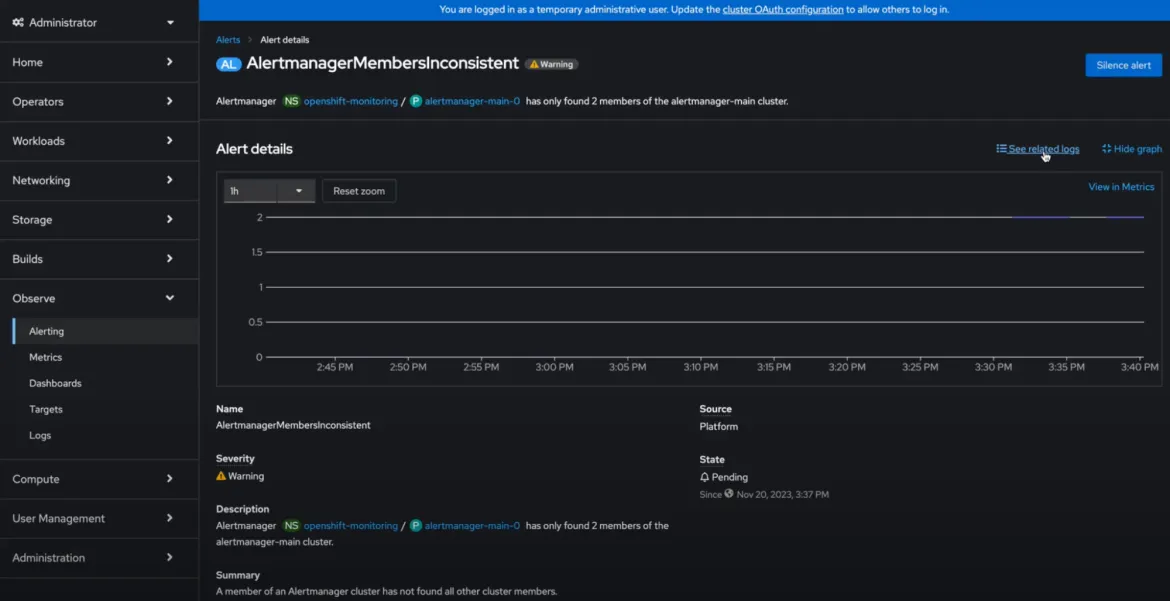
Once you click the link, you are immediately directed to the Observe > Logs UI, providing the relevant log query. More information on accessing the Logging view in the OpenShift web console is provided here.
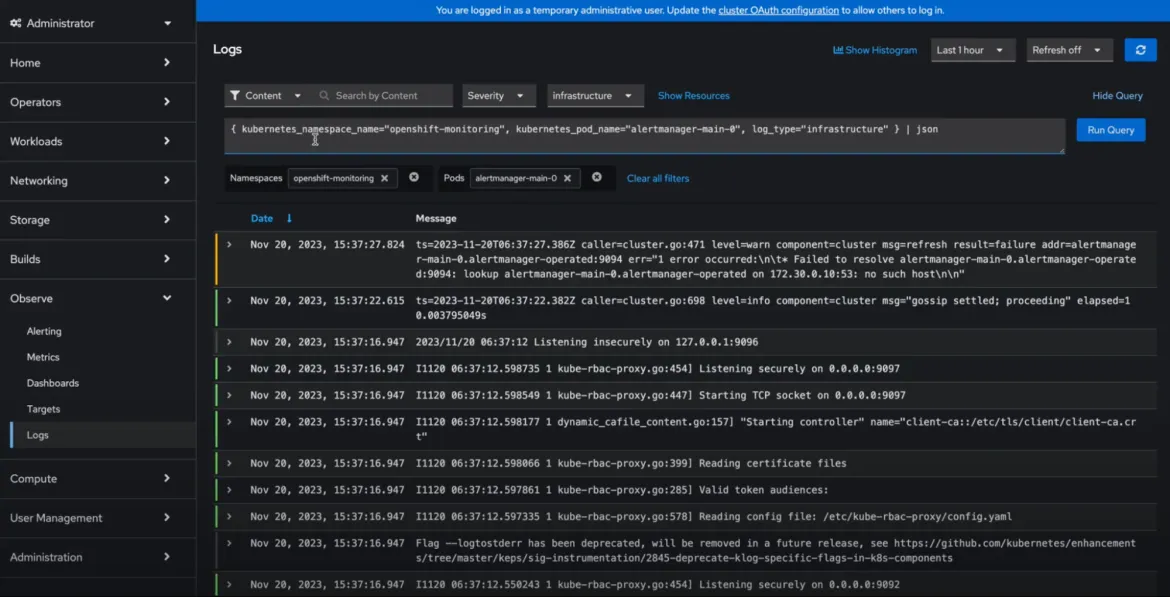
Similarly, once in the Logs UI, you can click on Metrics, which is provided in the Correlation column.
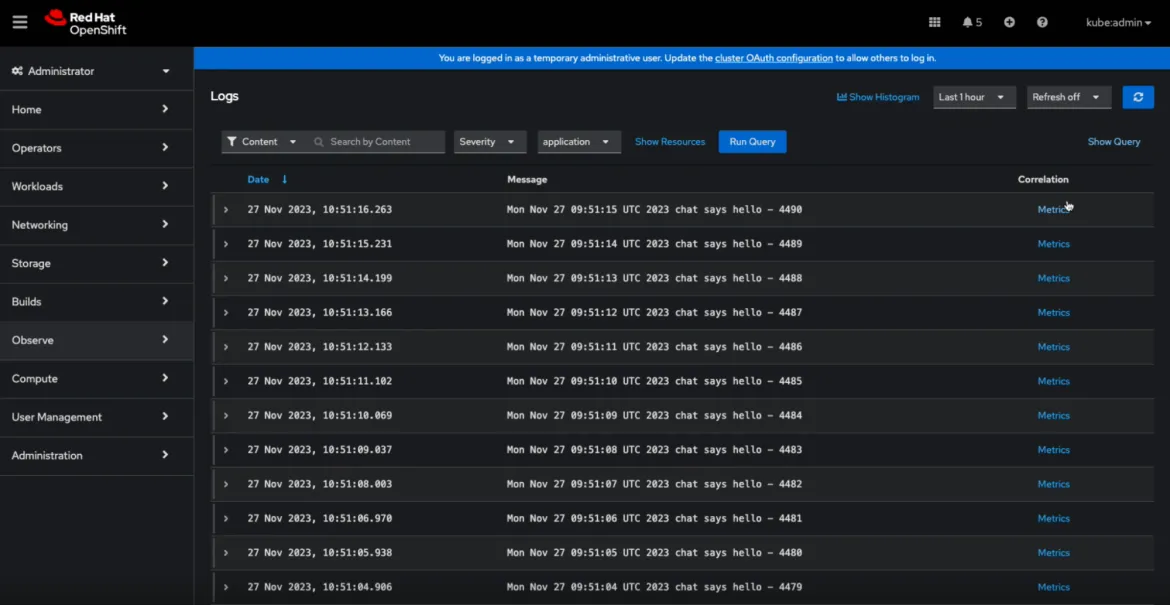
When you click Metrics, Korrel8r will find the equivalent metric to that log and redirect you to the Observe > Metrics UI, as shown in the screenshot below.
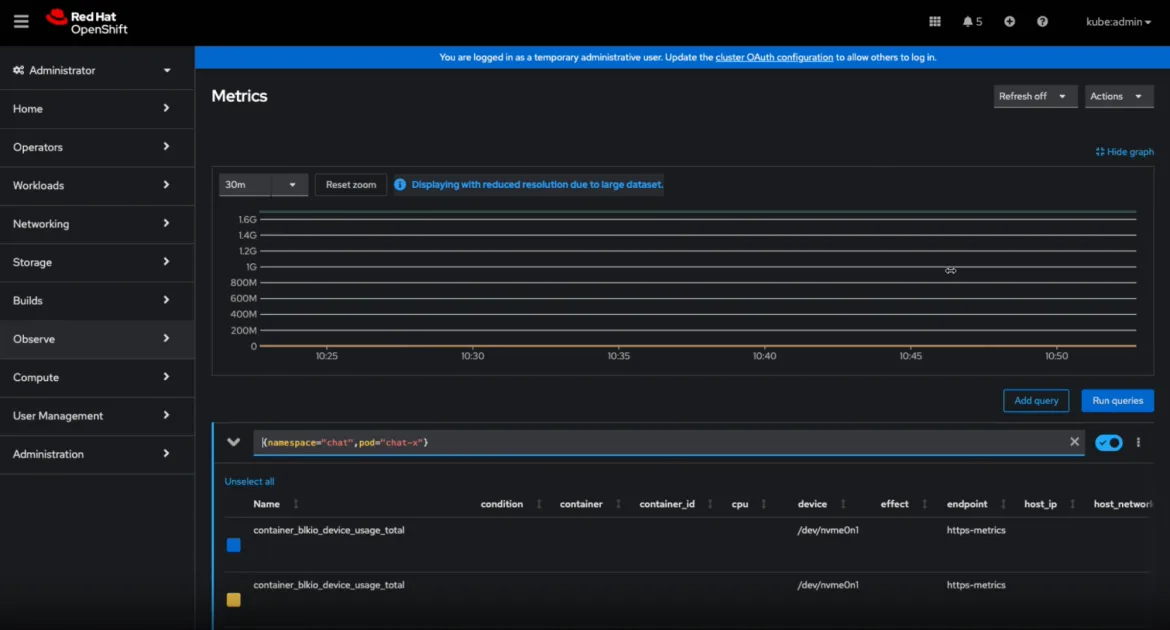
Look at the relevant documentation to learn more about it.
Deploying Korrel8r on an OpenShift cluster
You can install Korrel8r on an OpenShift cluster by using the Operator provided in the GitHub repository. Installing Korrel8r on an OpenShift cluster enables you to use the web console to view Korrel8r data.
Prerequisites
- You have administrator permissions on an OpenShift cluster, version 4.12 or newer.
- You have installed the Red Hat OpenShift Logging Operator provided by Red Hat.
- You have installed the Loki Operator provided by Red Hat and created a LokiStack custom resource (CR).
- You have created a ClusterLogging CR that configures LokiStack as the log store.
See this documentation for a complete description of the procedure.
What's next?
We are just beginning our observability signal correlation journey in OpenShift. The next steps include expanding the supported signals in Korrel8r—including Tempo—and providing OpenShift web console users with an improved user navigation experience by incorporating a debugging side-panel and a topology graph. Stay tuned for more! We look forward to receiving your feedback.
저자 소개
Vanessa is a Senior Product Manager in the Observability group at Red Hat, focusing on both OpenShift Analytics and Observability UI. She is particularly interested in turning observability signals into answers. She loves to combine her passions: data and languages.
Background in distributed systems and messaging middleware, nowadays focused on observability in the cloud.
채널별 검색
오토메이션
기술, 팀, 인프라를 위한 IT 자동화 최신 동향
인공지능
고객이 어디서나 AI 워크로드를 실행할 수 있도록 지원하는 플랫폼 업데이트
오픈 하이브리드 클라우드
하이브리드 클라우드로 더욱 유연한 미래를 구축하는 방법을 알아보세요
보안
환경과 기술 전반에 걸쳐 리스크를 감소하는 방법에 대한 최신 정보
엣지 컴퓨팅
엣지에서의 운영을 단순화하는 플랫폼 업데이트
인프라
세계적으로 인정받은 기업용 Linux 플랫폼에 대한 최신 정보
애플리케이션
복잡한 애플리케이션에 대한 솔루션 더 보기
오리지널 쇼
엔터프라이즈 기술 분야의 제작자와 리더가 전하는 흥미로운 스토리
제품
- Red Hat Enterprise Linux
- Red Hat OpenShift Enterprise
- Red Hat Ansible Automation Platform
- 클라우드 서비스
- 모든 제품 보기
툴
체험, 구매 & 영업
커뮤니케이션
Red Hat 소개
Red Hat은 Linux, 클라우드, 컨테이너, 쿠버네티스 등을 포함한 글로벌 엔터프라이즈 오픈소스 솔루션 공급업체입니다. Red Hat은 코어 데이터센터에서 네트워크 엣지에 이르기까지 다양한 플랫폼과 환경에서 기업의 업무 편의성을 높여 주는 강화된 기능의 솔루션을 제공합니다.


